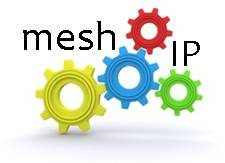 Virtualization has “virtually” changed the IT world in which we all work and play. Why is virtualization so attractive to IT administrators? The answer is easy — there are many uses and benefits that we gain through virtualization. For starters, the thought of being able to have a single server’s physical footprint represent many servers on the network has been a boon to administrators looking to consolidate space and reduce operation costs. Having the ability to quickly stand up a VM copy of a major application or work server for patch testing is a benefit that allows administrators to test during business hours is simply a game changer. But what about backup of data in virtualized environments?
Virtualization has “virtually” changed the IT world in which we all work and play. Why is virtualization so attractive to IT administrators? The answer is easy — there are many uses and benefits that we gain through virtualization. For starters, the thought of being able to have a single server’s physical footprint represent many servers on the network has been a boon to administrators looking to consolidate space and reduce operation costs. Having the ability to quickly stand up a VM copy of a major application or work server for patch testing is a benefit that allows administrators to test during business hours is simply a game changer. But what about backup of data in virtualized environments?
Let’s take a step back to understand where we stand in the area of backup and recovery today. Symantec recently surveyed more than 1,400 IT professionals on their backup practices and ability to recover information in the event of a disaster. The findings strongly suggest that traditional approaches to backup are broken and a new approach is necessary. Here’s why:
• Confidence in backup is lacking — especially virtual backups. The purpose of a backup is to have worry-free data recovery in case of disaster. Yet, 36 percent of respondents are not confident that their backed up data can be quickly recovered when needed. And when it comes to virtualized backup, 42 percent of respondents reported that their virtualization backups don’t work adequately.
• Backup SLAs aren’t being met. One-third of respondents indicated that they’re either not meeting backup-and-recovery SLAs or are unsure if they are. Of those not meeting SLAs, 49 percent said they can’t meet them because they have too much data—due to the size of the backup, lack of bandwidth, and the sheer volume of data.
• The current backup and recovery approach is complex. More than one-third of respondents noted that backup is extremely time- consuming, and nearly as many said the same about recovery.
In this scenario, it is evident that backup and recovery need to change. To address growing backup needs, and streamline the complex processes, enterprises anticipate making significant changes in the near future. Within the next 12 months tape-based backups will decrease by one-third, and Symantec expects these organizations will be investigating appliance and cloud-based backup solutions. As many as 72 percent of the organizations surveyed would change vendors if they could double the speed of their backups.
Bring virtualization into the picture, and the paradigm changes significantly. I often speak with administrators that look for ways to simply protect their virtualized assets for the purpose of full recovery in the event of disaster- i.e. their backup solution is only working to back up, but not truly embrace their virtual solution. What if we start taking the approach of having the backup software actually using virtualization as a true extension of the recovery plan? Can we take virtualization to be a resource that can be leveraged as the platform for recovery for both physical and virtual servers alike?
To answer this, we need to first understand the current environment. Sure, the world is going virtual in a strong way but this is not something that is going to happen overnight. Although many early adopters have moved forward to become near 100 percent virtualized, most administrators are still governing environments that are heavily comprised of both physical and virtual server assets. As such, administrators need a solution that is not only purpose-built to work for their entire environment but one that takes advantage of the virtual infrastructure specifically to allow them to further leverage their IT investments.
Furthermore, businesses need to be able to not only leverage their existing virtual infrastructure for items including instant recovery of any physical or virtual server that is protected, but also leverage the cloud to recover, test or migrate any virtual machine that is in your environment. And for good measure, imagine that when it is time to migrate that physical server to a new virtual body you simply power on the virtual copy that was created and maintained as part of the standard backup of a physical server! This greatly simplifies the complexity that exists around backup today, and it means that in the near future, we can backup – and recover – our most important information literally at the touch of a button.
To successfully embrace new technologies and increase confidence in backing up mission-critical data, Symantec offers the following recommendations:
- Break the backup window. Eliminate out-of-control backup windows by using solutions that accelerate full backups multifold without sacrificing recovery time either.
- Unite physical and virtual backups. Using a single solution for both environments will drive down operating costs, reduce storage, and accelerate recoveries.
- Consolidate backup and recovery tools in a single appliance. Integrating backup, deduplication, and storage in a single solution will drive down operating costs and capital expense while simplifying day-to-day operations in the data center and remote offices.
- Fight infinite retention. Many businesses have tremendous legal risk and cost exposure resulting from over-retention of backup tapes. Identify what information to archive and what to delete, based on relevance to legal discovery or compliance cases. This reduces the time and cost IT spends on eDiscovery and eliminates the need to keep backups forever.
- Stop putting tapes on trucks. Combine deduplication with disaster recovery to transmit data over the network from the production site to the DR site instead of loading tapes onto trucks.
Author: Vijay Mhaskar
Source
- The Customer Edge Drives the Need for NaaS - June 25, 2023
- Blockchain Evolves And Secures - January 13, 2019
- Bessemer Ventures’ 2018 Cloud Computing Trends - February 25, 2018




